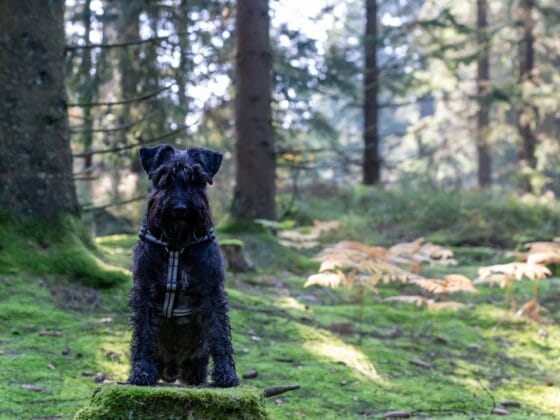Saint Bernard: The Gentle Giant of the Alps
The Saint Bernard is a breed of large working dog that originated in the Swiss Alps. Known for their gentle nature and impressive size, these dogs have captured the hearts of dog lovers around the world. In Poland, the Saint Bernard has gained popularity as a family pet and a search and rescue dog. In this article, we will explore the history, characteristics, and uses of the Saint Bernard in Poland.
A Brief History
The Saint Bernard breed has a rich history that dates back over 1,000 years. They were originally bred by monks at the Saint Bernard Hospice in the Swiss Alps. These dogs were used to guard the hospice and help rescue lost travelers in the treacherous mountain passes. The breed’s name comes from the hospice itself, which was dedicated to Saint Bernard de Menthon, the patron saint of mountaineers.
In the early 19th century, the Saint Bernard’s reputation as a rescue dog spread beyond the Swiss Alps. The breed gained international recognition after several high-profile rescues, including the famous story of Barry, a Saint Bernard who reportedly saved the lives of over 40 people. These heroic acts solidified the Saint Bernard’s reputation as a reliable and courageous working dog.
Characteristics and Temperament
The Saint Bernard is a large and powerful dog, with males weighing between 140 to 180 pounds and standing 27 to 35 inches tall at the shoulder. Despite their imposing size, they are known for their gentle and friendly nature. They are excellent with children and make great family pets.
One of the most distinctive features of the Saint Bernard is its droopy jowls and expressive eyes. Their thick coat, which can be either short or long, provides insulation in cold weather. The breed comes in various colors, including red and white, mahogany and white, and brindle.
While the Saint Bernard is generally a calm and easygoing dog, they do require regular exercise to stay healthy and happy. Daily walks and playtime are essential to prevent obesity and maintain their muscle tone. Despite their size, they can adapt well to apartment living as long as they receive enough exercise.
Uses in Poland
In Poland, the Saint Bernard serves various roles, including being a beloved family pet and a search and rescue dog. Due to their friendly and patient nature, they are well-suited for therapy work. Many Saint Bernards in Poland are trained as therapy dogs and visit hospitals, nursing homes, and schools to provide comfort and companionship to those in need.
Additionally, the Saint Bernard’s natural instincts and excellent sense of smell make them valuable search and rescue dogs. They are often used in mountainous regions to locate missing hikers or avalanche victims. Their large size and strength allow them to navigate difficult terrain and carry supplies or equipment if needed.
Conclusion
The Saint Bernard is a remarkable breed that has captured the hearts of people around the world, including in Poland. Their history as rescue dogs in the Swiss Alps has solidified their reputation as courageous and reliable working dogs. In Poland, they serve as beloved family pets and play important roles in search and rescue operations and therapy work. Whether it’s their gentle nature, impressive size, or their ability to save lives, the Saint Bernard continues to be a cherished breed in Poland and beyond.







